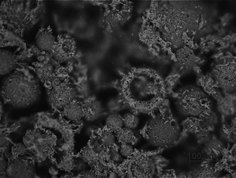Micropollutants occur in natural waters from a range of sources. Estrogenic compounds are naturally excreted by humans and hence stem predominantly from wastewater effluents. Due to their small molecular weight and concentration their effective control is a challenge. In this study magnetic ion exchange (MIEX®), which was developed to remove natural organic matter (NOM) from surface water, was investigated for such a micropollutant, estrone. The interaction of estrone with the resin occurs as a side effect when NOM is removed. This interaction results in some degree of removal. However, the accumulation of those hazardous materials on the resin, which can be associated with accidental release, as well as the concentration in the regeneration brine of the process, is environmentally more significant. For this reason a thorough investigation of interaction phenomena was undertaken. Estrone and polymeric materials (such as ion exchange resins or membranes) interact through a number of mechanisms including specific and non-specific interactions. Sorption and desorption of estrone were studied as a function of pH, temperature, natural organic matter concentration, sulfate concentration and ionic strength to elucidate possible mechanisms. The results demonstrated that the resin removed around 70% estrone at high pH conditions (>10.4) when estrone was predominantly negatively charged. However, below pH 10.4, when estrone was neutral, approximately 40% of estrone still sorbed due to hydrogen bonding. The optimum temperature for estrone sorption was observed to be in the 15 to 35 °C range, while the presence of other anions, including natural organic matter reduced estrone removal due to competition for anion exchange sites. Desorption of estrone was most effective with 2 M NaCl regeneration brine concentration when estrone was negatively charged (98% desorption). However, when estrone was neutral there was no significant difference between 1 M and 2 M NaCl. The results presented in this study indicate that polar non-ionic micropollutants were removed by magnetic ion exchange resin due to sorption to the resin polymer. This has implications for treatment, however, the accumulation of micropollutants on polymeric materials in water treatment as well as the abundance of such micropollutants in the regeneration brine are risks that warrant monitoring.


 Please wait while we load your content...
Please wait while we load your content...